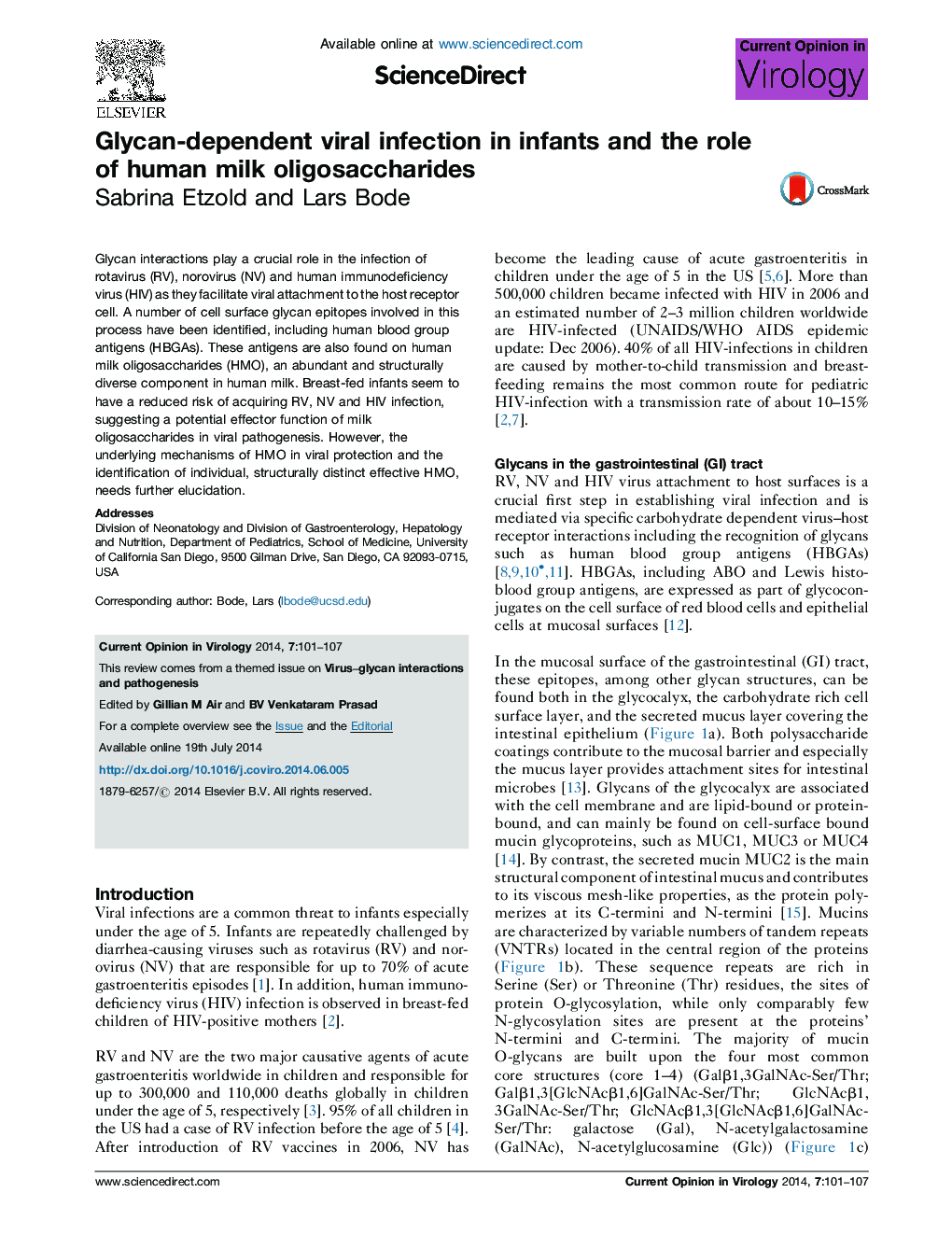| Article ID | Journal | Published Year | Pages | File Type |
|---|---|---|---|---|
| 2473297 | Current Opinion in Virology | 2014 | 7 Pages |
•RV, NV and HIV attachment to host surfaces is mediated via human blood group antigens (HBGAs).•HBGAs are glycan epitopes and are also present on oligosaccharides abundant in human milk.•Human milk oligosaccharides (HMO) are thought to act as soluble decoy receptors.•HMO prevent viral attachment, reducing RV and NV infection and HIV transmission.
Glycan interactions play a crucial role in the infection of rotavirus (RV), norovirus (NV) and human immunodeficiency virus (HIV) as they facilitate viral attachment to the host receptor cell. A number of cell surface glycan epitopes involved in this process have been identified, including human blood group antigens (HBGAs). These antigens are also found on human milk oligosaccharides (HMO), an abundant and structurally diverse component in human milk. Breast-fed infants seem to have a reduced risk of acquiring RV, NV and HIV infection, suggesting a potential effector function of milk oligosaccharides in viral pathogenesis. However, the underlying mechanisms of HMO in viral protection and the identification of individual, structurally distinct effective HMO, needs further elucidation.
